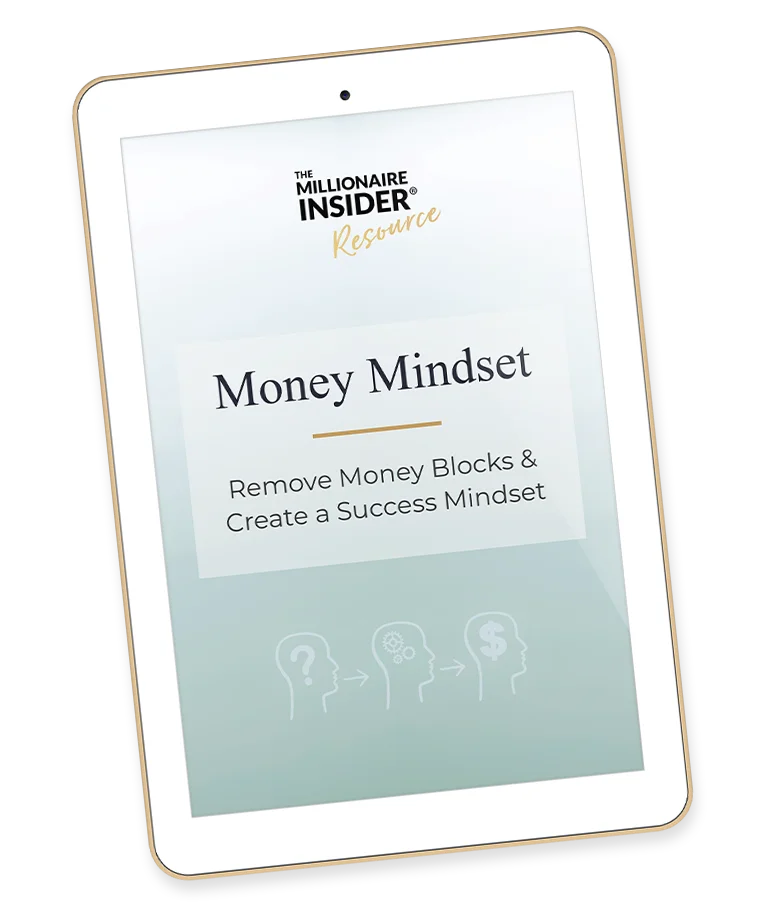Introduction to Oniomania
In today’s consumer-driven world, it’s easy to fall prey to the allure of shopping. Many people often see retail therapy as a way to lift their mood.
When done in moderation and within your budget, it is ok. But, like substance abuse, that is not always the case.
It can become a compulsion when you cannot control your shopping habits. This condition is known as oniomania.
This article will explore:
- What oniomania is
- Underlying causes
- How to overcome overspending
Disclosure
TheMillionaireInsider.com® copyrights all materials and intellectual property.
This information is for educational purposes only. It is not intended to replace the advice of any advisor or specialist, nor to provide investment, financial, tax, retirement, planning, or healthcare advice.
Always consult with a qualified professional before making any financial decisions or changes.
What is Oniomania?
People refer to oniomania as compulsive buying disorder (CBD).
It is a behavioral addiction characterized by an urge to shop excessively and impulsively.
It often has negative long-term financial, emotional, and psychological consequences.
People suffering from CBD continue to buy items they can’t afford and often don’t need. This can lead to debt, strained relationships, and emotional distress.
Other descriptions include:
- Addicted to shopping
- Compulsive shoppers
- Impulsive online shopping
Origination of CBD
Initially, people considered compulsive shopping a mental health disorder.
However, the concept of compulsive buying  as a behavioral addiction began to emerge at the turn of the century.
as a behavioral addiction began to emerge at the turn of the century.
Examples include:
- Impulse control disorders
- Obsessive-compulsive disorder
Later, professionals started to define compulsive buying as a distinct condition. Some key contributors include Emil Kraepelin, a German psychiatrist. Dr. Donald Black, a psychiatrist, researched impulsive behaviors, including compulsive buying.
Additional insight into the condition has developed over time.
Signs and Symptoms
Recognizing the signs and symptoms of oniomania is critical for early intervention. Some common indicators include:
- Frequent and excessive shopping, often beyond one’s financial means.
- Compulsive spending or thoughts about shopping.
- Feelings of guilt or remorse after shopping sprees.
- Hiding or lying about spending money on loved ones.
- Neglecting responsibilities, such as work
- Failed attempts to control or reduce shopping behavior.
- Distress or anxiety when resisting the urge to shop.
- Maxing out credit cards and increasing debt.
What Causes Compulsive Buying
.

Understanding the root causes of oniomania can shed light on why some individuals develop this addiction. Several factors contribute to the development of compulsive buying disorder:
Emotional Triggers
Many people use shopping as a coping mechanism for stress, anxiety, depression, or loneliness.
Social Influences
Peer pressure and a need for social status can fuel compulsive buying.
Chemical Factors
Some studies suggest that brain chemistry plays a part—specifically, the feel-good chemical dopamine.
Childhood Experiences
Trauma during childhood can contribute to compulsive buying as a way to fill emotional voids.
Marketing and Advertising
Clever advertising and marketing tactics can trigger impulsive buying behaviors.
10 Helpful Recovery Tips
Overcoming oniomania is challenging,  but it is possible with commitment and the right plan. Here are some tips to help individuals struggling with compulsive buying disorder regain control over their lives:
but it is possible with commitment and the right plan. Here are some tips to help individuals struggling with compulsive buying disorder regain control over their lives:
1. Acknowledge the Problem
The first step in overcoming any addiction is to acknowledge that there is a problem. Admitting that you have a compulsive buying disorder is essential for seeking help and making the required changes.
2. Seek Professional Help
Consulting a mental health expert is crucial for addressing the underlying emotional and psychological factors contributing to oniomania. Addiction treatment and therapy, including cognitive behavioral therapy (CBT), can help individuals understand their triggers and develop healthier coping mechanisms.
3. Create a Budget
Developing a realistic budget can be an effective tool for managing finances and curbing impulsive spending. It can also help you to regain control of your finances.
Examples of steps include:
- Tracking your income and expenses (If this seems overwhelming, commit to a period of time and then expand your timeframe.)
- Setting financial goals
- Monitoring your spending plan
4. Avoid Triggers
Identify and avoid situations or environments that trigger the urge to shop impulsively. This might include:
- Unsubscribing from marketing emails
- Avoiding shopping malls
- Unfollowing shopping-related social media accounts
5. Practice Mindfulness

Mindfulness techniques can help individuals become more aware of their emotions and cravings.
Examples include meditation and deep breathing exercises.
Learning to pause and reflect before making impulsive purchases can be a game-changer.
6. Develop Alternative Coping Strategies
Replace shopping with cheaper and healthier coping strategies for managing stress and negative emotions.
Examples include:
- Exercise
- Painting
- Journaling
- Spending time with loved ones
Any positive activity that diverts your focus from shopping can be helpful.
It is also helpful to embody your emotions. For example, pause and sit in the feeling when you feel the urge to splurge. Initially, it may be difficult, frustrating, and even overwhelming. But, as you get comfortable being uncomfortable, you create new neural pathways (habits) that, over time, help you avoid impulse responses. As a result, you get into the driver’s seat of your life and the decisions you make.
7. Set Realistic Goals
Set achievable goals for reducing or stopping compulsive buying. Start with small steps and gradually work towards larger goals, such as starting a retirement plan. Celebrate your successes along the way to stay motivated.
8. Join Support Groups
Connecting with others facing similar challenges can provide a sense of community and support. Consider joining a support group or seeking online forums and resources dedicated to compulsive buying disorder.
9. Practice Self-Compassion
Be kind and patient with yourself throughout the recovery process. Overcoming oniomania is not easy, and setbacks may occur. Recognize that relapses are a part of recovery and use them as opportunities for growth.
10. Involve Loved Ones
Share your journey with trusted friends and family members who can provide emotional support and encouragement. Loved ones can help keep you accountable and offer a safety net during challenging times.
Conclusion – “Oniomania: What it is and How to Overcome it”

Oniomania is a real and challenging condition. Your recovery is a journey that will take time and effort.
It can have serious consequences for individuals and their loved ones. Understanding the underlying causes and recognizing the signs and symptoms are crucial steps toward recovery.
Overcoming oniomania requires an integrated approach involving professional help, self-awareness, and the development of healthier coping mechanisms.
Determination, support, and planning can help someone with oniomania regain control over their lives. As a result, they can break free from the cycle of overspending and create a healthier and more balanced relationship with money.

